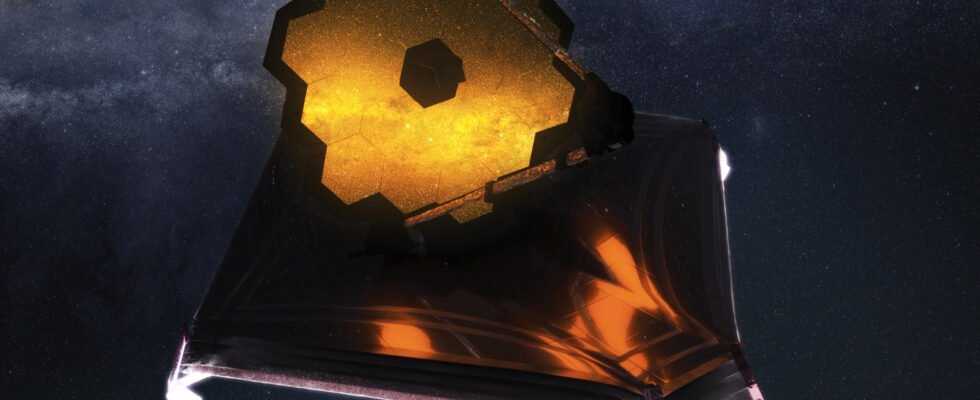Leaving Earth at the end of December, the James Webb telescope has already covered approximately 90% of the distance that separates it from its destination, 1.5 million kilometers away.
James Webb is now not very far from his destination: according to the tracking site set up by NASA, which allows you to know where the telescope is in space, the observatory has covered almost 90% of the distance which separates it from its point of arrival, the Lagrange point L2 of the Earth-Sun system, which is 1.5 million km away.
The telescope should be on site at the end of January 2022, in about ten days. In anticipation of its arrival, its cruising speed has been significantly reduced along the water: it only travels at almost 300 meters per second, whereas it was still speeding at 1 km/s at the start of the year — and even more during the beginning of its journey in space.
James Webb unfolds the segments of his mirror
The opening of the telescope is also continuing and has entered its final phase: all that remains is to deploy all the segments that make up its primary mirror, which requires operating no less than 132 motors. And this is done at a very, very slow pace, of just a few millimeters: 12.5 mm over the next ten days. As for the alignment, it will take place over the next three months.
NASA also offers another tracking tool that allows you to view this first sequence of the deployment of the mirrors.
At the end of January, James Webb will not yet be ready for service: once well placed in its orbit, the telescope will enter a crucial calibration phase which will last five months. It will also be at this time that the machine will take the opportunity to lower the temperature of its scientific instruments. It is in the summer of 2022 that the first observations will be able to begin.
James Webb’s primary mission is to last five years. Therefore, it is expected that during this period it will provide useful data for the objectives assigned to it. That said, we now know that the telescope will be able to serve a total of ten years, or even twenty years, thanks to the quality of Ariane 5’s take-off. This is good news, which partly mitigates the delays and additional costs of the project.

